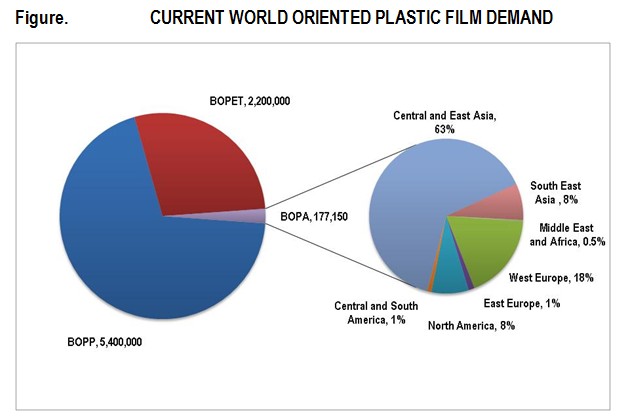

| 塑料薄膜: BOPP | CPP | BOPET | BOPA | 胶带产业: 胶带膜 | 丙烯酸及酯| VIP 专区 | 彩印专区: 新闻 | 技术 | 分析 | 行情 | 政策 | 国际频道 |
| 塑料原料: PE | EVA | PP | 粉料 | 溶剂油墨: 醇类 | 芳烃 | 酮类 | 醋酸及酯 | 软包基材: 双拉 | 流延 | 镀铝 | 吹膜 | 阻隔 | 原油专区 |
The serious over-capacity that has faced the bi-oriented nylon film (BOPA) industry in recent years appears to be nearly over, concludes a recent study from PCI Films Consulting.
Key Facts
Current world BOPA film production capacity is 220,000 tonnes per annum
Current world BOPA film demand is 180,000 tonnes per annum
The world BOPA film demand increased at an average rate of 8% between 2004 and 2009
Future capacity expansions are expected to increase world capacity by 20,000 tonnes by 2014, but film demand is set to grow by 50% more
Since 2004, the world BOPA film industry has doubled in size and rapidly outpaced demand growth. PCI‘s Managing Director, Simon King, states that, “The massive increase in capacity that occurred in the past has finally been absorbed into the market and our projections for demand growth over the next five years suggest that new capacity is required to satisfy world demand”.
Capacities for BOPA film production grew at high rates between 2004 and 2006, with China alone seeing the entry of ten new producers into their domestic BOPA film industry. In addition, suppliers in other mature markets, such as North America expanded capacity to meet local and export needs, making the over-supply situation even more acute. This excess capacity intensified competition and caused world production utilisation rates to fall by 20%, putting pressure on prices and margins and expanding the market horizons of most suppliers as they sought business to fill their plants. The solution was to idle capacity, re-engineer some lines to produce other films and to run lines at reduced speeds. Some producers even exited the industry altogether.
